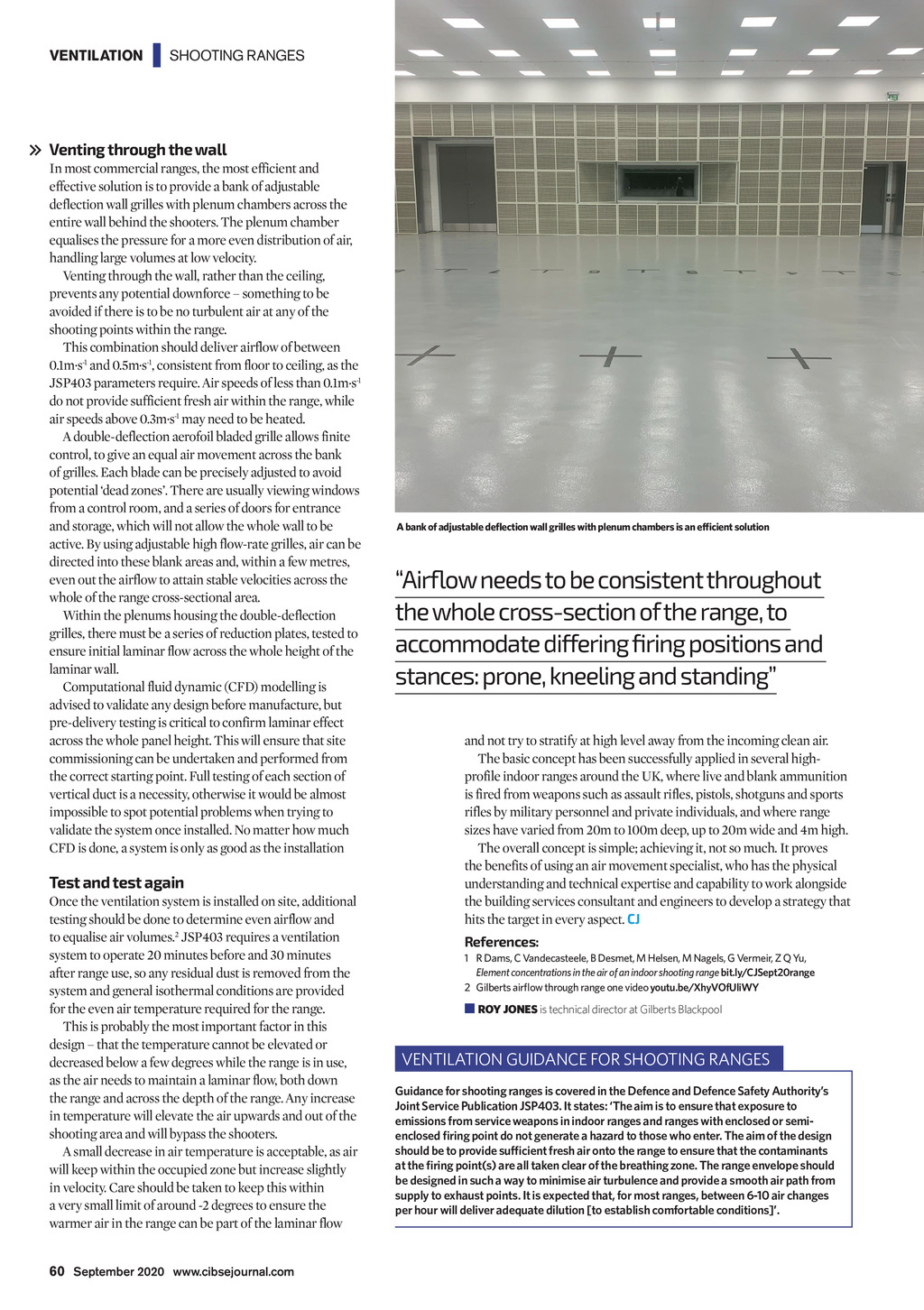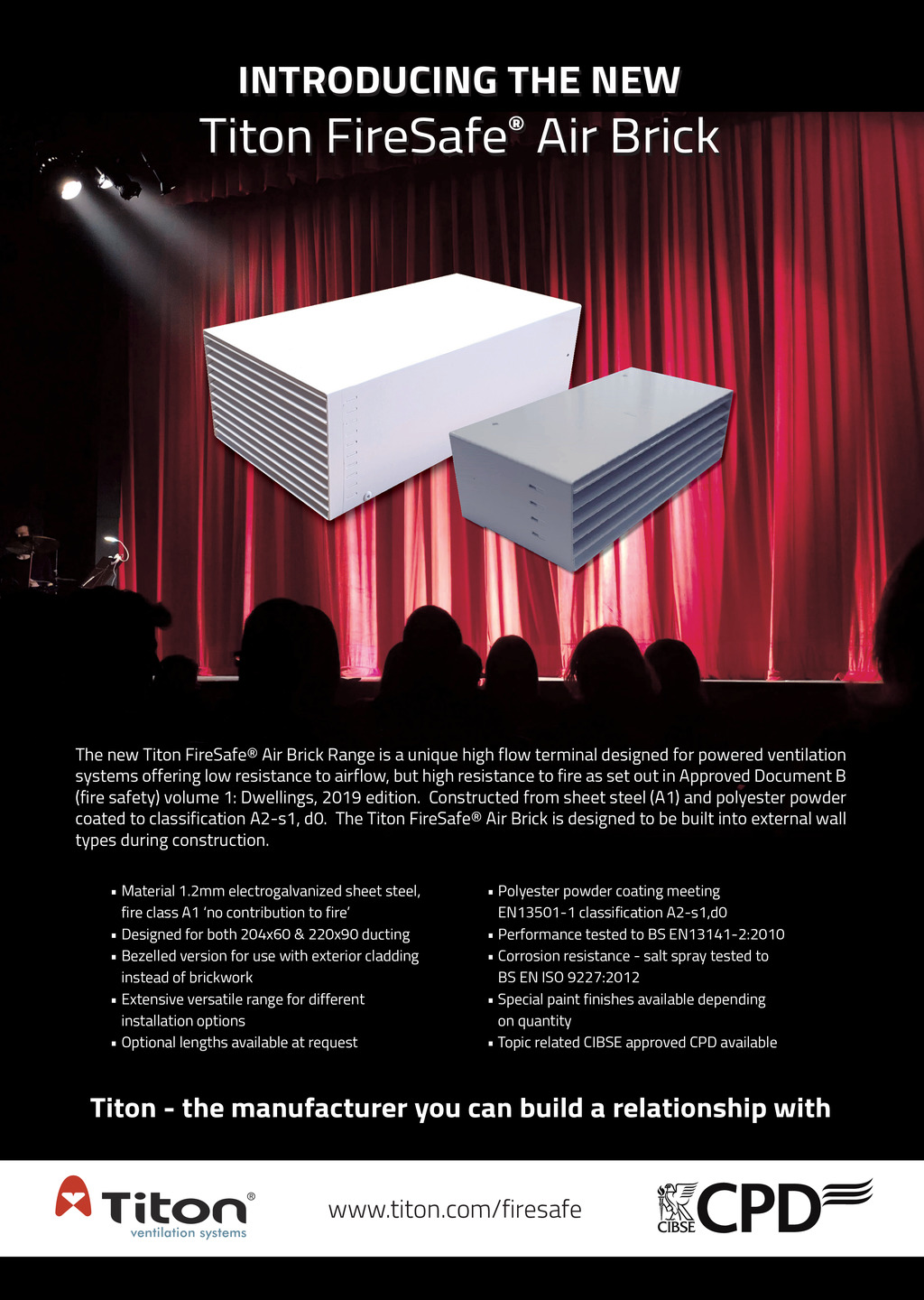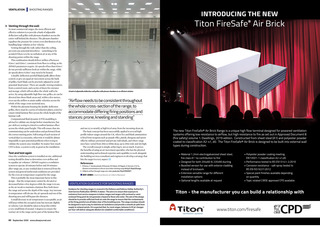


VENTILATION | SHOOTING RANGES Venting through the wall In most commercial ranges, the most efficient and effective solution is to provide a bank of adjustable deflection wall grilles with plenum chambers across the entire wall behind the shooters. The plenum chamber equalises the pressure for a more even distribution of air, handling large volumes at low velocity. Venting through the wall, rather than the ceiling, prevents any potential downforce something to be avoided if there is to be no turbulent air at any of the shooting points within the range. This combination should deliver airflow of between 0.1m.s-1 and 0.5m.s-1, consistent from floor to ceiling, as the JSP403 parameters require. Air speeds of less than 0.1m.s-1 do not provide sufficient fresh air within the range, while air speeds above 0.3m.s-1 may need to be heated. A double-deflection aerofoil bladed grille allows finite control, to give an equal air movement across the bank of grilles. Each blade can be precisely adjusted to avoid potential dead zones. There are usually viewing windows from a control room, and a series of doors for entrance and storage, which will not allow the whole wall to be active. By using adjustable high flow-rate grilles, air can be directed into these blank areas and, within a few metres, even out the airflow to attain stable velocities across the whole of the range cross-sectional area. Within the plenums housing the double-deflection grilles, there must be a series of reduction plates, tested to ensure initial laminar flow across the whole height of the laminar wall. Computational fluid dynamic (CFD) modelling is advised to validate any design before manufacture, but pre-delivery testing is critical to confirm laminar effect across the whole panel height. This will ensure that site commissioning can be undertaken and performed from the correct starting point. Full testing of each section of vertical duct is a necessity, otherwise it would be almost impossible to spot potential problems when trying to validate the system once installed. No matter how much CFD is done, a system is only as good as the installation Test and test again Once the ventilation system is installed on site, additional testing should be done to determine even airflow and to equalise air volumes.2 JSP403 requires a ventilation system to operate 20 minutes before and 30 minutes after range use, so any residual dust is removed from the system and general isothermal conditions are provided for the even air temperature required for the range. This is probably the most important factor in this design that the temperature cannot be elevated or decreased below a few degrees while the range is in use, as the air needs to maintain a laminar flow, both down the range and across the depth of the range. Any increase in temperature will elevate the air upwards and out of the shooting area and will bypass the shooters. A small decrease in air temperature is acceptable, as air will keep within the occupied zone but increase slightly in velocity. Care should be taken to keep this within a very small limit of around -2 degrees to ensure the warmer air in the range can be part of the laminar flow A bank of adjustable deflection wall grilles with plenum chambers is an efficient solution Airflow needs to be consistent throughout the whole cross-section of the range, to accommodate differing firing positions and stances: prone, kneeling and standing and not try to stratify at high level away from the incoming clean air. The basic concept has been successfully applied in several highprofile indoor ranges around the UK, where live and blank ammunition is fired from weapons such as assault rifles, pistols, shotguns and sports rifles by military personnel and private individuals, and where range sizes have varied from 20m to 100m deep, up to 20m wide and 4m high. The overall concept is simple; achieving it, not so much. It proves the benefits of using an air movement specialist, who has the physical understanding and technical expertise and capability to work alongside the building services consultant and engineers to develop a strategy that hits the target in every aspect. CJ References: 1 R Dams, C Vandecasteele, B Desmet, M Helsen, M Nagels, G Vermeir, Z Q Yu, Element concentrations in the air of an indoor shooting range bit.ly/CJSept20range 2 Gilberts airflow through range one video youtu.be/XhyVOfUliWY ROY JONES is technical director at Gilberts Blackpool VENTILATION GUIDANCE FOR SHOOTING RANGES Guidance for shooting ranges is covered in the Defence and Defence Safety Authoritys Joint Service Publication JSP403. It states: The aim is to ensure that exposure to emissions from service weapons in indoor ranges and ranges with enclosed or semienclosed firing point do not generate a hazard to those who enter. The aim of the design should be to provide sufficient fresh air onto the range to ensure that the contaminants at the firing point(s) are all taken clear of the breathing zone. The range envelope should be designed in such a way to minimise air turbulence and provide a smooth air path from supply to exhaust points. It is expected that, for most ranges, between 6-10 air changes per hour will deliver adequate dilution [to establish comfortable conditions]. 60 September 2020 www.cibsejournal.com CIBSE September 2020 pp59-60 Shooting range.indd 60 21/08/2020 17:12